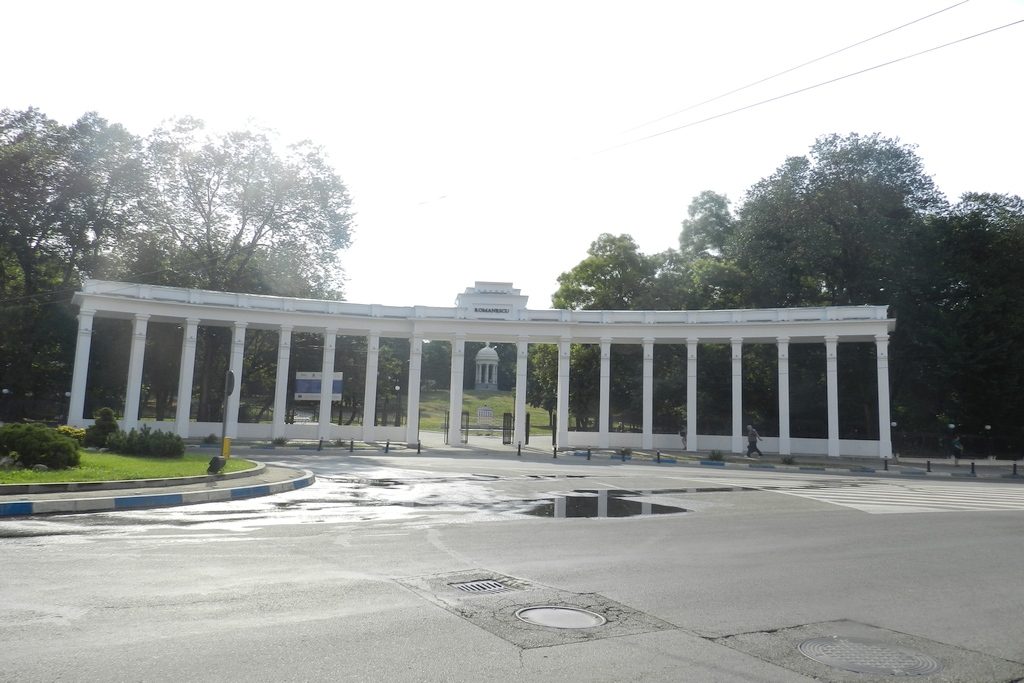

The Romanescu Park, known throughout the time also under the name of the Bibescu Park, the Park of Independence, or the Park of the People, is situated in the place, where, at the middle of the XIXth century, there was the property and the garden of the Bibescu family. The garden, arranged by a German gardner, at the initiative of the great chancellor Ioan (Iancu) Bibescu, was arranged with pavilions, benches and greenhouses.
After 1848, being under an advances state of deterioration, the garden was bought by the City’s magistrate from the great chancellor Ioan Bibescu, the purpose of the buying being the one of transforming it into a real public garden for the recreation of the people from the city. The events developed on an internal plan led to the Union of the Principalities made that this wish of the regnant Barbu Știrbei couldn’t be realized anymore.
At the end of the century, after less then 50 years from the buying by the city of the garden from the chancellor Iancu Bibescu, the former garden had become one of the most in-sanitary areas of the city. The lake was a pest hole and one of its sides there was built the stables of the City Hall. The summer residence of the Bibescu family was also transformed into a cripple asylum. At the initiative of Nicolae P. Romanescu, the mayor of Craiova from that moment, the park was projected by the French architect Edouard Redont.
The construction of the park started in the year 1897 and it was inaugurated in 1903 in the presence of King Carol. Edouard Redont took the project of the future Romanescu Park at the International Exposition from Paris (1900), and the project was awarded with the Golden Medal. The park was executed in a romantic style, a synthesis of the scenery architecture and painting. There are found fragments from the paintings of the French impressionists from the centuries XVII – XIX, as well as of the Dutch painters.
The total surface of the park is of 9, 6 hectares and comprises, among the ornamental plantations of arbors and capers, an expansion of water of over 4 hectares, a hippodrome of 20 hectares, roads, alleys and foot paths which total over 35 km in length.
It is considered to be the biggest natural park from the East of Europe. Also, the park is equipped with an amphitheater for shows, a small zoo and a few restaurants.
In this park, there are found a few very interesting objectives:
– The Suspended Bridge – a bridge built in 1901 – 1902;
– The Charmed Castle – on one of the hills, near the bridge, there is found a castle (a former restaurant), now being a tourist objectives. His ruins are very beautiful.
– The Hippodrome from Craiova – Inaugurated in 1903, it was used for the trap and gallop courses. After the Second World War, the front part of the tribune was transformed into a field for the contests of jumping over the obstacles. Starting with the year 2000, there hasn’t been any type of activity, excepting for the athletic contests.
In 1943, as a tribute brought to the one who looked after closely the execution of the park, at the principal entrance, there was built up a bust of N. Romanescu. Throughout the time, there were executed numerous works which enhances the beauty of the park. Between the years 1954 – 1956, there was built the existent portal today at the principal entrance, there was executed the enclosure with fence with piers and concrete pedestal and wire netting, there was rebuilt and enhanced the pier. In the year 1964, there was modernized the public lighting and it was built a greenhouse of 1050 square meters, the prestigious Romanian creators contributing with numerous works of plastic art at the beauty of this place.
